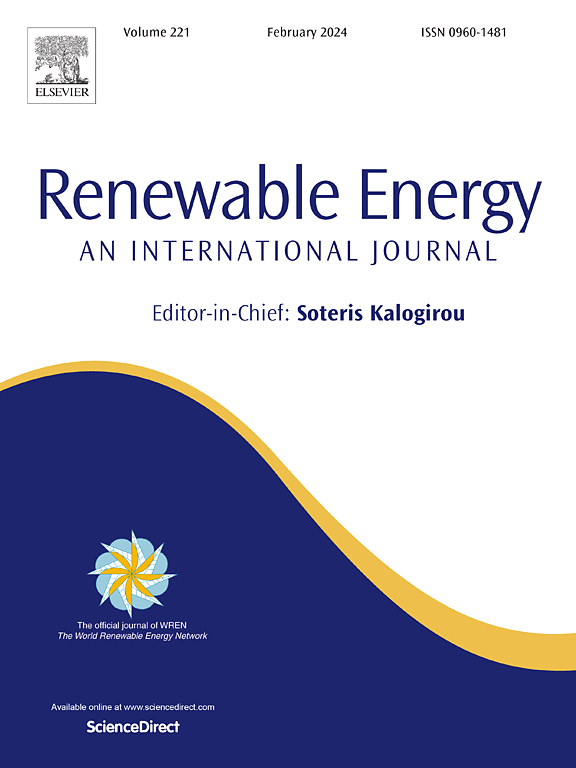加强巴西农业工业部门的生物质能回收:通过桃糖浆废弃物管理创新沼气、生物甲烷和氢气生产
IF 9
1区 工程技术
Q1 ENERGY & FUELS
引用次数: 0
摘要
本研究旨在评估巴西南巴西大德州(里约热内卢Grande do Sul)桃子加工业产生的废物中能源回收的潜力。研究了糖浆桃生产过程中产生的半固体残渣,以及通过厌氧消化产生沼气、CH4和H2的潜力。采用两种不同的方法使我们能够估计氢气生产的潜力,并便于比较。每年的水果加工量从216吨到19200吨不等,产量为4800吨。半固体残留物的年份−1。结果表明,年- 1 CH4产量可达5.79E+05 m3,年- 1总发电量为1.74E+06 kwh。此外,估计氢气总产量为5.60E+06 m3 /年。这些研究结果表明,对桃果加工废弃物的管理具有促进可再生能源发电的巨大潜力。本文章由计算机程序翻译,如有差异,请以英文原文为准。

Enhancing biomass energy recovery in Brazil's agro-industrial sector: Innovating biogas, biomethane, and hydrogen production through peach syrup waste management
This study aimed to assess the potential for energy recovery from waste generated by the peach processing industry in the Brazilan state of Rio Grande do Sul. The generation of semi-solid residues during the production of peach in syrup, as the potential for biogas, CH4, and H2 production through anaerobic digestion, was investigated. The undertaking of two different methodologies allowed us to estimate the potential for H2 production and to facilitate comparisons. The processing ranges from 216 to 19,200 tons of fruit annually and generates 4800 tons.year−1of semisolid residues. The results indicate that CH4 production could reach 5.79E+05 m3 year−1, giving a total electricity generation of 1.74E+06 kWh.year−1. Additionally, a total H2 production of 5.60E+06 m3 year−1 was estimated. These findings suggest that the management of the waste bi-products from peach processing industry has significant potential for contributing to renewable energy generation.
求助全文
通过发布文献求助,成功后即可免费获取论文全文。
去求助
来源期刊

Renewable Energy
工程技术-能源与燃料
CiteScore
18.40
自引率
9.20%
发文量
1955
审稿时长
6.6 months
期刊介绍:
Renewable Energy journal is dedicated to advancing knowledge and disseminating insights on various topics and technologies within renewable energy systems and components. Our mission is to support researchers, engineers, economists, manufacturers, NGOs, associations, and societies in staying updated on new developments in their respective fields and applying alternative energy solutions to current practices.
As an international, multidisciplinary journal in renewable energy engineering and research, we strive to be a premier peer-reviewed platform and a trusted source of original research and reviews in the field of renewable energy. Join us in our endeavor to drive innovation and progress in sustainable energy solutions.
 求助内容:
求助内容: 应助结果提醒方式:
应助结果提醒方式:


